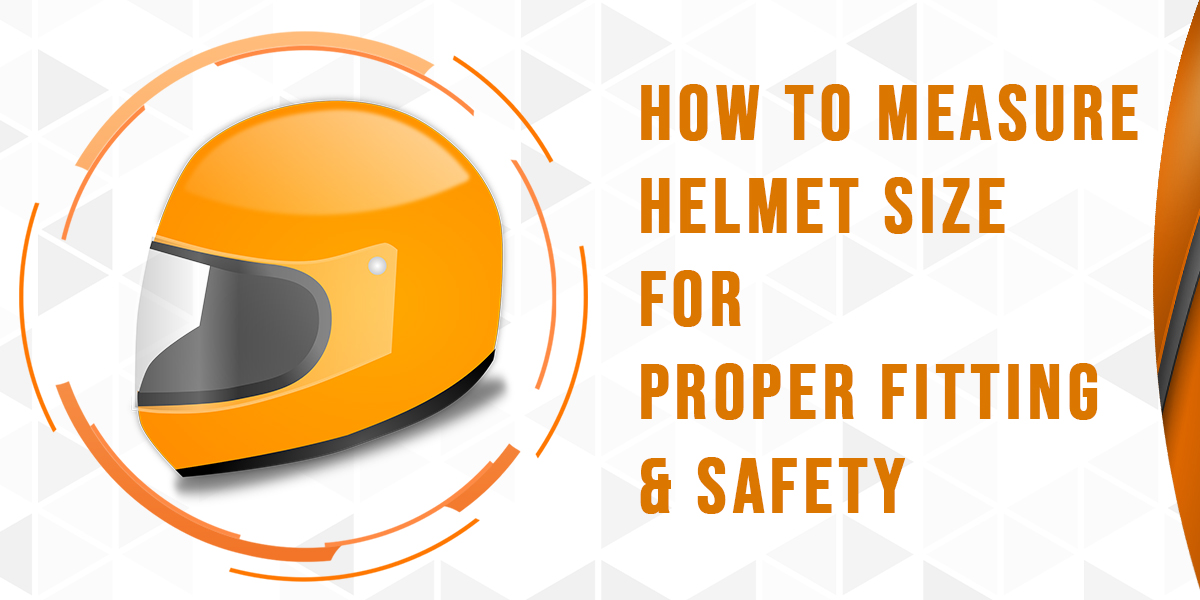Many bikers cite hair problems as a reason for not wearing a helmet once on a while. And few others simply describe the helmet as ‘uncomfortable’.
Guess what!
An uncomfortable helmet promotes hair problems and additionally gives other pains and less safety. An ill fitting helmet can cause more damage than good. In this article, we shall get to know how to shop for a proper-fitting helmet that will make you love it and call it your ‘biking buddy’.
Questions To Ask Yourself Before Buying A Helmet
- What kind of biking are you into? Badass off-roading or regular commuting or everything under the sun?
- Do you wear sunglasses? Or glasses prescribed by a doctor?
- How long do your usual biking trips last? Long, enriching journeys or just a few minutes of riding?
- How much weight can you handle? No matter how heavy it is, would you only want to have your head perfectly protected? Or “No thanks, let’s make it easy for my head to carry”?
- Are you buying a helmet with sports in mind?
Now, let’s look into how to measure your head. Once your measurements are ready, it is easy to choose the perfect helmet for you.
How To Measure The Helmet Size?
Take a measuring tape (not the civil engineer’s tape but a tailor’s tape) and ideally a pen and paper to note down. Getting a friend will be much helpful but if you can’t, you can manage it yourself.
If you’re doing it by yourself, wrap the tape around your forehead and note down the length. If your friend is helping you, ask him to do the same.
The Wrong Ways To Measure Your Head Size:
- Using a straight ruler (and thinking you can adjust it to the tape measurements).
- Using your hands and measuring the head size in cubits or spans. Please don’t use the logic ‘1 span is equal to 9 inches or 0.2286 metres’.
- Wrapping the tape around your head along with the ears or eyes. Remember that the measuring tape should go around the forehead and above the ears and eyebrows (not over them).
- Wrapping the tape way too tight or way too loose.
After you get the right measurement, you need to know the shape of your head.
So, what does the shape have to do with your helmet?
You have the measurements and you can go pick the helmet with those dimensions, right?
Wrong!
Is It Mandatory To Know Your Head’s Shape Before Buying?
Shape of your head is often forgotten while picking a helmet. This results in situations where the helmet doesn’t fit comfortably to the head. Again, when a helmet does not fit you comfortably, complete safety cannot be assured.
Broadly, head shapes are divided into 3 types. Although there are many types, we want to make it simpler for you.
Oval, round and a hybrid of these two called egg-shaped.
Oval shape is narrow yet long and the round shape is short yet wide. Egg-shape has a round-shape’s top and oval-shape’s bottom and there is a probability for several variations in this.
But knowing which of these basic three best describes your head is enough to choose a helmet.
If you cannot decide it for yourself (looking in the mirror), ask a friend to pick which shape looks like your head.
What Kind of Safety Do You Need?
- Dual-sport helmet offers complete protection against harsh conditions and has smooth padding usually. An all rounder helmet.
- Off-road helmet is a good choice for rough biking as it comes with a comfortable chin bar. It is available in many shapes, which means you can get the perfect fitting helmet as though it is custom made for your head. Note: An off-road helmet is poor in eye protection.
- Full face helmet is heavy but the safety provided is satisfactory for everyday usage.
- Leisure helmets are light in weight and the safety is not bad as it is usually used for not so harmful activities like cycling and hiking.
- For winter sports, ski helmets provide complete protection. Don’t compromise with other types of helmets. Ski helmet gives compatibility to have goggles on, which is essential for snow sports.
Helmet Sizes Available In India
In this section, you will know the approximate measurements of each helmet’s size. Keep in mind that this list is not standard and will vary slightly with each brand.
However, you will know between which two sizes your right pick lies.
| Size Name | Measurement (inches) | Remarks |
|---|---|---|
| X Small | 20 ⅞ inches – 21 ¼ inches | This fits for exceptionally small heads or kids. |
| Small | 21⅝ inches – 22 inches | In terms of hat size, this is a 6⅞-7. |
| Medium | 22½ inches – 22⅞ inches | Falls under the hat size 7⅛ – 7¼. |
| Large | 23 ¼ inches – 23 ⅝ inches | |
| X Large | 24 inches and 24 ⅜ inches | |
| XX Large | more than 25 inches | This fits for exceptionally large heads. |
6 Things You MUST Know Before Buying a Helmet
Start by choosing the helmet that is close to the criteria discussed above. Take the dealer’s help if you are unsure.
While wearing a helmet, the ears will curl in a little. It is fine as long as there is no pain. After wearing the helmet make sure it is hurting.
1. The right kind of helmet shouldn’t be too tight (or too loose).
If you feel that the helmet’s inner padding against your skin is comfortable, fasten the chin strap. It is normal for the cheek padding to make your cheeks a little pressed in but you should be able to find it getting fit as time goes by.
2. Pay attention to the chin bar.
Chin bar is the area where many bikers often face discomfort. Not just the feel of the chin bar but the height where it touches your face. Mainly, off-roading bikers won’t be able to pull off long-distances if the chin bar is at a wrong height.
3. Loose fitting helmets aren’t good for your safety.
Remember that helmets which are too comfortable to wear are too loose to keep your head safe.
That does not mean, you have to struggle a lot while wearing the right helmet. It feels like a little squeeze to your head and after wearing, you can feel your head settled cozily in the helmet.
If the measurements coincide and yet the helmet doesn’t feel comfortable, then it can be due to any one of the following reasons.
- The inner padding is sized differently and is not apt for your head shape.
- You or your friend has made a mistake in measuring your head size.
4. Keep wearing it for sometime to check if it’s really comfortable.
After you finally find a comfortable helmet, keep it on for 15 minutes (if you’ve ordered it online).
If you’re at the store, take a drive wearing your choice of helmets. Driving while it is on will give you a better experience by covering factors like audibility of the external noises, friction to the ears and head, and so on.
If the helmet doesn’t feel comfortable, look for a different helmet.
5. Try your helmet with your eye-glasses (or sunglasses).
If you wear eye-glasses or are fond of wearing sunglasses, try your helmet while wearing them. If this compatibility fails, buying that helmet will make you regret your choice every single day.
6. How long do you travel each day?
Consider the distance you travel everyday. If it is long, pick a helmet that is easy in terms of weight.
But pick the helmet that encloses your head completely. Though you can choose the one that has airflow and soundflow vents without having to worry about ventilation.
Conclusion
Get a tape, measure your head’s dimensions, know your head shape, head to the store or order it online and try the helmet for at least 15 minutes.
Find yourself loving to wear it everyday and be confident about your safety.

